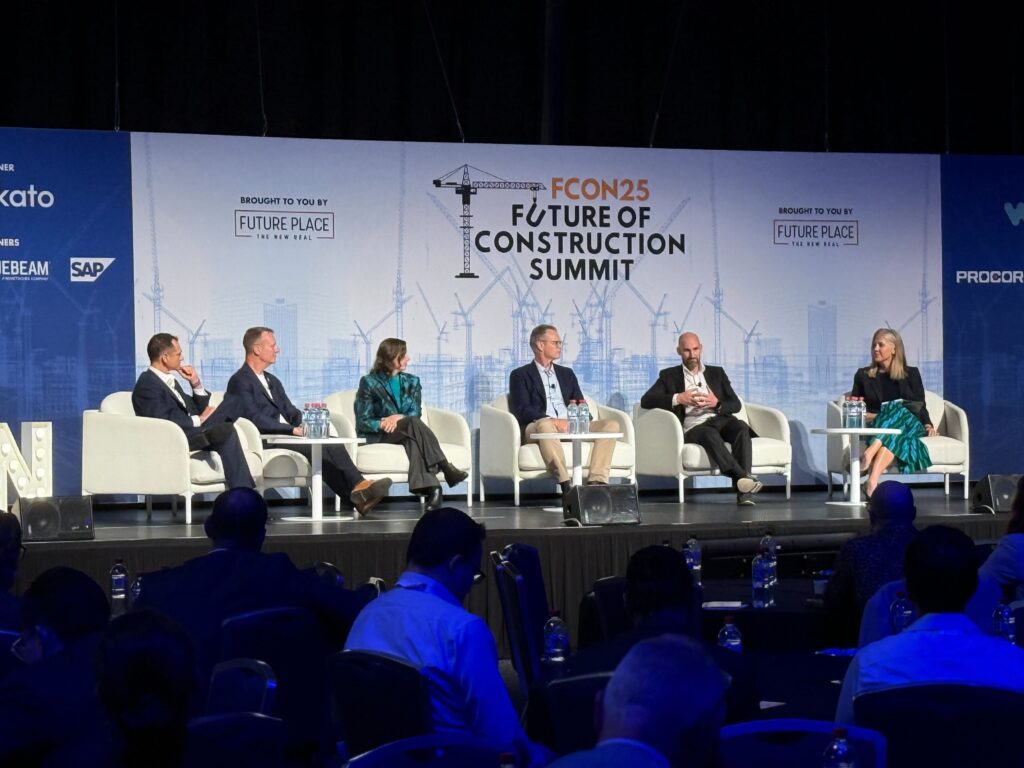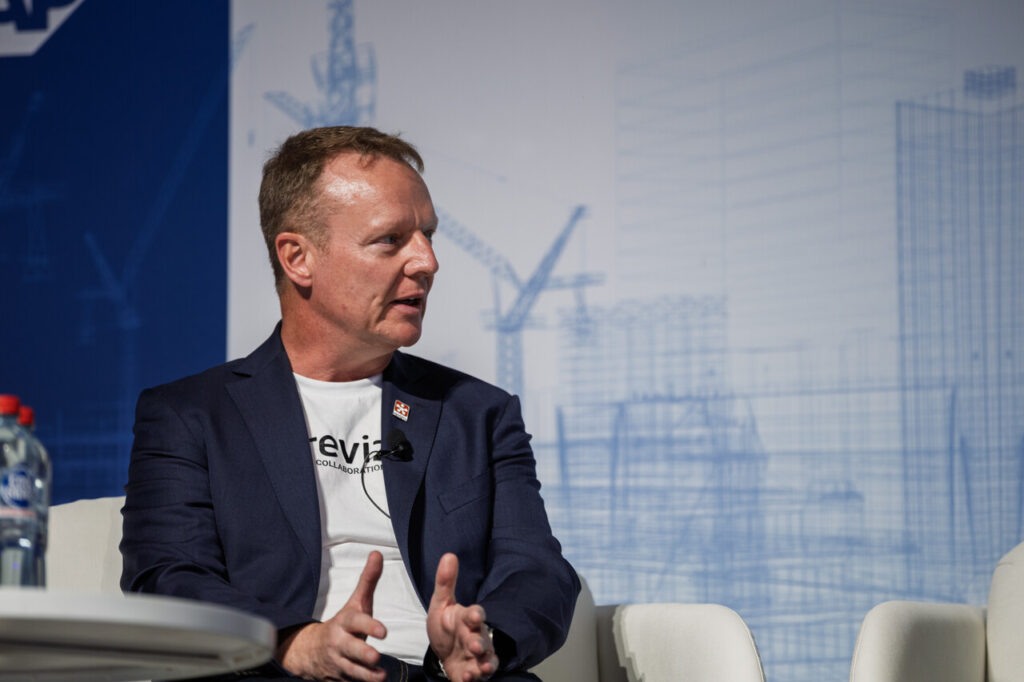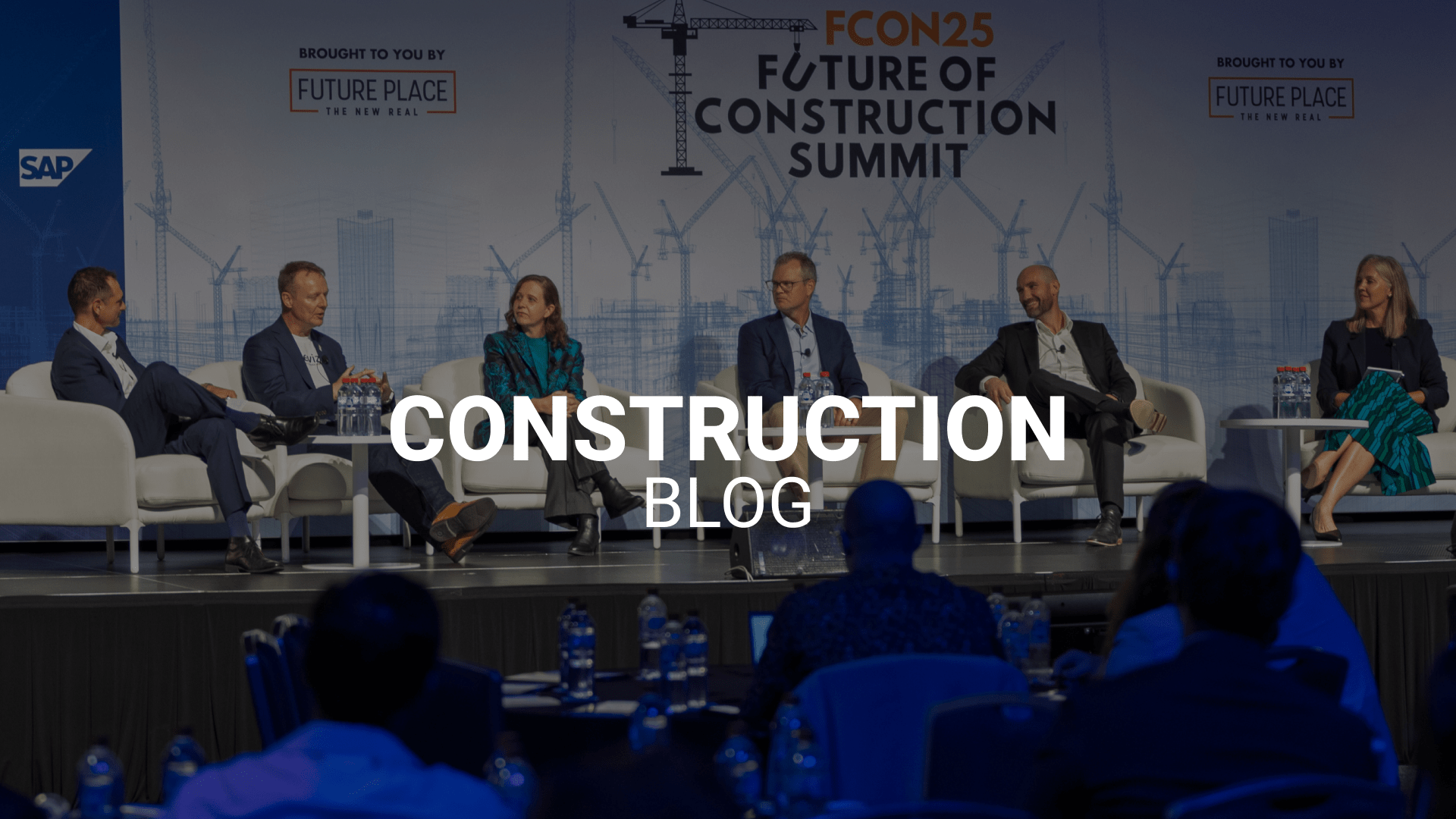Why the Construction Industry Can’t Afford to Stand Still: Insights from FCON 2025

On May 20 and 21, industry leaders from across Australia gathered in Brisbane for the Future of Construction Summit 2025 (FCON) – a two-day deep dive into how innovation, sustainability, and digital transformation can reshape the built environment.
As a Gold Sponsor of FCON 2025, Revizto was proud to join the conversation on the future of construction. With two speaking sessions and plenty of conversations throughout the event, we had a unique opportunity to hear firsthand the challenges and opportunities facing the industry. Here are some of the key takeaways.
The construction sector faces a paradox. Globally, there’s more than $22 trillion in confirmed work in the pipeline, including $100 billion expected in Australia by 2026. Yet despite this booming demand, productivity remains flat and profit margins razor-thin.
In Australia, productivity in construction has now dropped below 1990 levels, despite employing 1.3 million people and contributing up to 9% of national GDP. In Queensland alone, this productivity lag is costing the economy an estimated $11 billion—enough to fund 1,000 new schools, 25,000 hospital beds, or 10,000 km of new roads.

So, What’s Holding the Industry Back?
FCON 2025 exposed five persistent challenges stalling industry performance in Australia:
- Productivity Lag: Unlike sectors such as manufacturing, productivity in construction has barely improved in decades.
- Workforce Shortages: With 41% of the workforce nearing retirement and only one graduate entering for every five exiting, talent is disappearing fast.
- Tight Margins: Low profitability discourages long-term investment in innovation and technology.
- Sustainability Pressures: The construction industry contributes up to 39% of global emissions, yet many firms lack systems to track or reduce their footprint.
- Underinvestment in Technology: Most firms spend less than 1% of revenue on digital tools—far behind industries like banking, which invest 3–6%.
Despite these challenges, there’s significant opportunity—and digital transformation is the most powerful lever to drive meaningful change.
Making Carbon Visible: Insights from Jason Howden
One standout session at FCON was the panel “Building the future by leading the charge towards sustainable and circular construction”, featuring Jason Howden, Chief Innovation Officer at Revizto.
Construction is one of the world’s most polluting industries. But Jason believes the barrier to change isn’t infrastructure—it’s communication.

‘’Reports and spreadsheets are great… if you’re an accountant. But most people are visual learners—we need to see the impact.’’
Jason highlighted how visualization tools like Revizto can bring sustainability data directly into the design and planning process. By overlaying carbon data in 3D models—showing high-emission elements in red, for example—teams are empowered to make better decisions earlier in the project lifecycle.
Imagine going into a 3D model with a VR headset on and seeing carbon hotspots in red. You might actually do something about it. When people can visualize the impact of a decision, they’re far more likely to act.

His message is clear: with the right digital tools, sustainability can shift from an abstract goal to an integrated part of everyday workflows.
Digitizing Construction to Secure the Industry’s Future: Insights from Sara Khodayari
Another standout session was the roundtable “Digitizing Construction Through AI, Data, and Putting the User First”, led by John Lim Ji Xiong, Chief Digital Officer at GAMUDA, and co-led by Sara Khodayari, Global Account Manager at Revizto.
Following John Lim’s keynote on the same topic, the roundtable drew strong interest from participants eager to explore AI’s potential in construction—how to build better datasets for training, use AI more effectively, and apply GenAI in practical ways across the project lifecycle.
Sara also highlighted the growing challenge of attracting digital talent to an industry not traditionally seen as the first choice for top tech professionals. With nearly half the construction workforce nearing retirement and only one entrant for every five exits, the industry is on the verge of a knowledge crisis.
“How do we make this industry more attractive to the next generation? And, how do we retain that talent?” she asked.
For Sara, the answer lies in technology. Today’s emerging workforce is digital-first—they’ve grown up with modern tools, rapid innovation, and instant access to information. And they’re looking at construction and asking, ‘’Why does this industry still operate like it’s 1995?’’
The takeaway? To close the workforce gap and remain competitive, construction must modernise and fully embrace digital transformation.
Where to From Here?
FCON 2025 made one thing clear: the construction industry is under pressure, but it’s also on the brink of transformation. The firms that succeed will be those who act fast—embedding sustainability into project delivery, closing the workforce gap with smarter tools, and investing in digital transformation at every stage.
At Revizto, we’re proud to help lead this evolution by providing an intuitive and inclusive platform that enables real-time visibility, cross-team collaboration, and faster decision-making.

